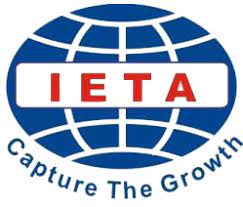COMMUNICATION STRATEGIES EMPLOYED BY EFL LEARNERS
 ),
), (1) Universitas Muhammadiyah Palembang
 Corresponding Author
Corresponding Author
Copyright (c) 2017 Lingua Didaktika: Jurnal Bahasa dan Pembelajaran Bahasa
DOI : https://doi.org/10.24036/ld.v3i1.7369
Full Text:
 Language : en
Language : en
Abstract
Communication strategies have something to do with ends and means. This current study attempts to answer the questions “What types of communication strategies were used by the speakers in speaking activities?” and “What were the functions of the communication strategies produced by the speakers in their interactions in performing the same tasks?” The investigation was conducted to the subjects taking Speaking Class at the English Study Program, Faculty of Teacher Training and Education, Universitas Muhammadiyah Palembang. The findings show that there were eleven types of communication strategies used by EFL learners in their interactions stimulated by the reading passages and pictures specifically utilized for data collection. Communication strategies were used by the speakers not only because of compensating for insufficient means, but also the need of communication.
Keywords
References
Bogdon, R. C. and S. K. Biklen. 1982. Qualitative Research for Education: An Introduction to Theory and Methods. Boston: Ally and Bacon.
Broughten, G. et al. 1978. Teaching English as a Foreign Language. London: Routledge & Kegan Paul.
Brown, H. D. 1987. Principles of Language Learning and Teaching. Englewood Cliffs, New Jersey: Prentice Hall Regents.
Brown, H. D. 1994. Teaching by Principles: An Interactive Approach to language Pedagogy. Englewood Cliffs, New Jersey: Prentice-Hall Regents.
Canale, M. and M. Swain. 1980. "Theoretical bases of communicative approaches to second language teaching and testing." Applied Linguistics 1(1). 1-47
Canale, M. 1983. Communicative competence to communi-cative language pedagogy. In J. Richards and Schmidt (eds) Language and Communi-cation. London: Longman.
Eldridge. 1996. EFL Journal Volume 50/4, October 1996.
Ellis, Rod. 1985. Understanding Second Language Acqui-sition. Oxford: Oxford University Press.
Færch, C. and G. Kasper. 1983. Plans and strategies in foreign language communication. In C. Faerch and G. Kasper (eds) Strategies in Inter-language communication. 15-21. New York: Longman Group Limited.
Hitchcock, G. and D. Hughes. 1991. Research and the Teacher: A Qualitative Introduction to School-based Research. London: Routledge.
Hymes, D. 1972. On communicative competence. In J.B. Pride and J. Holmes (eds) Socio-linguistics: Selected readings 269-293. Baltimore: Penguin. Pp.269-293
Levinson, Stephen C. 1983. Pragmatics. Cambridge: Cambridge University Press.
Markstein, Linda and Louise Hirasawa. 1983. Expanding Reading Skills: Intermediate. Rowley: Newbury House Publisher.
McCarthy, M. 1991. Discourse Analysis for Language Teachers. Cambridge: Cambridge University Press.
Nunan, D. 1992. Research Methods in Language Learning. Cambridge: Cambridge University Press.
Peccel, J. S. 1999. Pragmatics. London: Routledge.
Savignon, Sandra J. 1983. Communicative Competence: Theory and Classroom in Second Language Learning. Massachusetts: Addison-Wesley Publishing Company.
Stubbs, Michael. 1983. Discourse Analysis: The Sociolinguistic Analysis of Natural language. Oxford: Basic Blackwell.
Tarone, E. 1978. Conscious Communication Strategies in Interlanguage: a Progress Report. In TESOL 77. eds. H. Brown, C Yorio & R Crymes pp. 194—203. Washington DC: TESOL.
Tarone, E. and G. Yule. 1987. Communication Strategies in East-west Interaction. In Discourse across Cultures: Strategies in World Englishes, ed. Larry E. Smith. New York: Prentice-Hall Inc. pp. 49--65
 Article Metrics
Article Metrics
 Abstract Views : 559 times
Abstract Views : 559 times
 PDF Downloaded : 113 times
PDF Downloaded : 113 times
Refbacks
- There are currently no refbacks.
Copyright (c) 2017 Lingua Didaktika: Jurnal Bahasa dan Pembelajaran Bahasa

This work is licensed under a Creative Commons Attribution-NonCommercial 4.0 International License.









